Library on-line
Electronic library
Lately electronic libraries have become very popular among Internet-users. Firstly, due to the IT development, with Internet introducing, with rising of literacy rate.
77 Dances: Japanese Calligraphy by Poets, Monks, and Scholars 1568-1868, Stephen Addiss
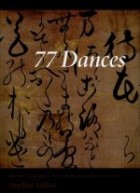
The first book on Japanese calligraphy from the significant Momoyama and Edo periods (1568–1868), 77 Dances examines the art of writing at a time when it was undergoing a remarkable flowering, as illustrated by over one hundred sumptuous illustrations. Everything from complex Zen conundrums to gossamer haiku poems were written with verve, energy, and creativity that display how deeply the fascination for calligraphy had penetrated into the social fabric of Japan. Examining the varied groups of calligraphers creating works for diverse audiences will show how these artistic worlds both maintained their own independence and interacted to create a rich brocade of calligraphic techniques and styles. The book begins with basic information on calligraphy, followed by six main sections, each representing a major facet of the art, with an introductory essay followed by detailed analyses of the seventy-seven featured works. The essays include: The revival of Japanese courtly aesthetics in writing out waka poems on highly decorated paper The use of Chinese writing styles and script forms Scholars who took up the brush to compose poems in Chinese expressing their Confucian ideals Calligraphy by major literati poets and painters The development of haiku as practiced by master poet-painters The work of famous Zen masters such as Hakuin and Ryokan.
Beginner's Guide to Calligraphy, Mary Noble
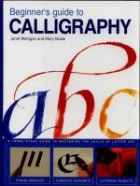
Mary Noble is a professional calligrapher working to commission, and she teaches at residential and day workshops across the country, as well as regular classes locally in Hampshire. She is a Fellow of the Society of Scribes and Illuminators (SSI) and a Fellow, Associate and Accredited tutor of the Calligraphy & Lettering Arts Society (CLAS). She actively supports both societies as well as the South Hampshire Calligraphers. She has a Cert Ed to teach in further education.
This book shows how to achieve perfect calligraphy. This work features a 'three-stage' approach designed to build up confidence and ability. It demonstrates the basic letter formation techniques behind each alphabet, then asks readers to practise writing the letters and simple sentences. It also introduces some advanced practices and techniques.
Calligraphy A to Z, Stuart David
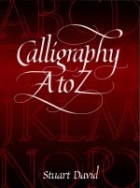
Anyone can be a calligrapher on short order with these streamlined techniques for learning the basics of the art. Calligraphy A to Z offers improved methods that shrink the learning curve and bring aspiring calligraphers immediate satisfaction. Its innovations include: a technique that allows you to form all letters, numerals, and punctuation marks with just a few basic strokes (most books make you learn 70 different forms!); emphasis on the structural elements of lettering--instead of imitating samples, you learn a basic-stroke method that focuses on the structural elements common to all letters; and an easier-to-learn technique that yields more personal, creative, and beautiful results. Unabridged republication of the edition published by Stravon Educational Press, New York, 1990. Appendix.
Calligraphy and Power in Contemporary Chinese Society (Anthropology in Asia), Yuehping Yen
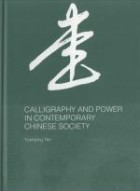
Unusual and interesting book is a fascinating account of the world of Chinese writing. It examines Chinese space and the political and social use of writing as propaganda, a publicity booster and as a ladder for social climbing.
Calligraphy: Easel-Does-It, Ouchida-Howells, Nancy
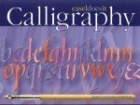
Using an innovative photographic method of displaying movement on the page that shows whole sequences of movement rather than step-by-step highlights, Calligraphy: Easel-Does-It makes understanding, learning and mastering the skills involved in creating illuminated text easier and more enjoyable than ever.The flip-over, easel style format also means that its 8 projects can easily be mounted for viewing while you practice. The projects are designed to develop a range of styles, including Gothic, Renaissance, Celtic, Romanesque and Modern Revival. Within each project, a technique is introduced and its usage explained; then step-by-step pictures and captions guide the reader through every stroke. All of the materials and equipment needed for each project are listed within the project. A Gallery section provides inspiration for the beginning calligrapher and demonstrates, through examples by professional calligraphers, the range of effects that can be achieved.
Fu Shan's World - The Transformation of Chinese Calligraphy in the Seventeenth Century
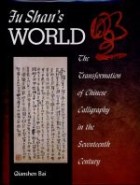
For 1,300 years, Chinese calligraphy was based on the elegant art of Wang Xizhi (A.D. 303-361). But the seventeenth-century emergence of a style modeled on the rough, broken epigraphs of ancient bronzes and stone artifacts brought a revolution in calligraphic taste. By the eighteenth century, this led to the formation of the stele school of calligraphy, which continues to shape Chinese calligraphy today.
A dominant force in this school was the eminent calligrapher and art theorist Fu Shan (1607-1685). Because his work spans the late Ming-early Qing divide, it is an ideal prism through which to view the transformation in calligraphy.
Rather than seek a single explanation for the change in calligraphic taste, the author demonstrates and analyzes the heterogeneity of the cultural, social, and political processes behind it. Among other subjects, the book covers the late Ming interaction between high and low culture; the role of publishing; the Ming loyalist response to the Qing; and early Qing changes in intellectual discourse. In addition to the usual approach of art historians, it adopts the theoretical perspectives of such fields as material culture, print culture, and social and intellectual history.
Medieval Calligraphy: Its History and Technique, Marc Drogin
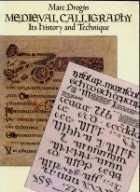
Spirited history, comprehensive instruction manual covers 13 important writing styles (ca. 4th century thru 15th). Fascinating facts about Roman Rustic, Uncial, Carolingian Minuscule, Early Gothic, 8 other styles; all examples beautifully photographed. Detailed directions for duplicating medieval techniques with modern tools.
Russian Calligraphy. One teacher, 222 students, Leonid Pronenko
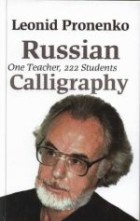
Leonid Pronenko, Professor, the Honorary Artist of Russia, laureate of local and international art contests, one of the foremost world calligraphers and typographers. At present time he lives and works in Krasnodar, teaches at the Faculty of Art and Graphics of the Kuban State University. Author of the Calligraphy for Everyone monograph (in Russian only)which is one of the most popular editions on the subject.
The current book includes the Professor’s commentaries, his works and the works of his students and apprentices. Many of them got ahead in their design and calligraphic careers. The book is in English.
2007. 248 pages, illustrated.
Leonid Pronenko is a participant of International Calligraphic Exhibition.
Teach Yourself Calligraphy (Teach Yourself Series), Patricia Lovett
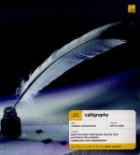
Written for the complete beginner, Teach Yourself Calligraphy shows the reader how to use calligraphy in a wide range of projects. It covers everything a novice needs to know to become confident at the craft, including the four basic calligraphy styles, and techniques such as embossing, simple bookbinding, rubber-stamp making, and stenciling. Detailed diagrams and color illustrations make the projects clear and simple to follow. The attractive, large-page format allows the book to stay open for hands-free practice, making this guide ideal for new calligraphers.
The art of calligraphy - a practical guide to the skills and techniques
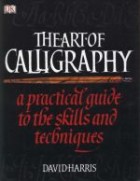
For 2000 years, the western Latin alphabet has developed and been modified by a vast range of social and technological changes, providing a rich and varied resource for the modern calligrapher to quarry. This book charts that development, presenting scripts in both historical and practical contexts. Calligraphers of all levels will be able to explore the origins of each script and understand anew the construction of the 26 letters that we use every day.
The Simple Art of Japanese Calligraphy, Yoko Takenami
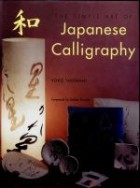
Not simply an art in itself, Japanese calligraphy includes the strengths of religion, philosophy, literature, and history. In this glorious instruction, Yoko Takenami shows how to create kanji characters representing entire words and two phonetic alphabets along with 15-beautiful paper, ceramic and fabric projects including making a signature seal, writing on pebbles, a Zen T-shirt, evening fan, a haiku hanging. Information on ink sticks, stones and brushes precedes the instruction.
Automated writing, Maksim Ksuta
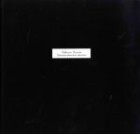
The current book presents twenty-three “automated writing” sessions: all of them are executed with ink on paper. Every session is unique and unusual: the shadowy drawings allude to real images. The works by Maksim Ksuta comprise various typographic practices.
The artist’s works may attract both professionals and art amateurs.
2008, 53 pages, illustrated.
Azbukovnik, Petr Chobitko
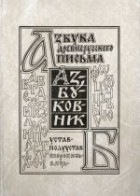
“Azbukovnik” was the name for the ancient Russian copy-books used in Russia till the late 1600’s. Nowadays there are no schools or tutors to teach the Old Russian script.
“Azbukovnik” is a manual giving the elements of the Old Russian script and offering practical tips of mastering the two basic script forms: uncial and semi-uncial. The author has worked out the methodology for studying the uncial and semi-uncial letters which eases the process of writing, grasping of historic models, and their conscious copying.
The book was recommended by the Department of Religious Education and Spiritual Enlightenment of St Petersburg Eparchy.
2008, 112 pages, illustrated.
Petr Chobitko is a participant of International Calligraphic Exhibition. Watch his works here.
Also you may enjoy the video-lessons given by Mr. Chobitko.
Near East
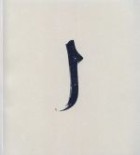
“Muslim art with its abstract aniconism is one of the predecessors of the new art. Its geometric, arabesque and calligraphic forms can serve as the source of inspiration for the young artists”, says Mikhail Piotrovsky, the State Hermitage Director about “text painting”.
The edition includes the works of six young artists living in the Arab East and Iran. The artists’ unique style comprises the art of calligraphic text execution and picturesque images. The artists are: Ali Omar Ermes, Estel Adnan, Rashid Koraishi, Malikhe Afnan, Ndja Makhdaui and Mohamed Eskhai: each of them has demonstrated his own calligraphy. The edition is translated in Russian and English.
2007. 65 pages, illustrated.
Initial Caps, Margaret Morgan (Encyclopedia)
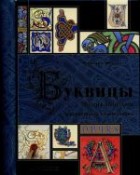
Decorative calligraphy is the art of book ornamentation, for instance, decoration of initial caps with patterns, pictures, different colors and gilding. The encyclopedia tells about the instruments and techniques applied for creating the ornaments and initial caps, all the stages of the preparation process.
It is a unique manual containing full alphabets and figures executed in six historic styles including Celtic, Gothic and Roman. It is a full-color illustrated book written in lucid literary style. At the end of the book there is a modern gallery.
2006. 258 pages, illustrated.
Methodic instructions on practical course of the Art of Typography, Nikolai Taranov
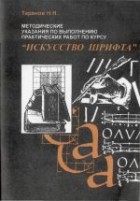
Nikolai Taranov - Doctor of Education, Candidate of art history, professor, member of Union of Russian artists. He is the author of five education books on the fonts, among them the main are “Written font” (Lvov, 1986), “Art of the written script” (Moscow, 1989), “Script and image” (Moscow, 1991).
The manual outlines the preparation for the typographic works, and the sample lessons demonstrate the methodology of various handwritten scripts based on Latin and Cyrillic alphabets.
2005, 40 pages, illustrated
Nikolay Taranov is a participant of International Calligraphic Exhibition. Watch his works here.
Life of Reverend Sergius of Radonezh, the Miracle-Worker
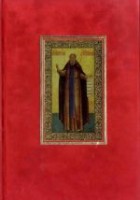
Miniatures from the 16th century “Life…” edition, collection of Holy Trinity-St. Sergius Laura vestry. Album
The album about the reverend abbot Sergius of Radonezh, the founder of Holy Trinity –St. Sergius Laura, contains original miniatures from the 16th century “Life…” edition, kept at the Laura vestry. The miniatures present the main events St. Sergius’s life and endeavors.
Publication of the album about Sergius of Radonezh, the saint Russian hermit, was blessed by His Holiness Alexis II Patriarch of Moscow and All Russia.
315 pages, illustrated.
Art of Chinese calligraphy, Lei Leiqu
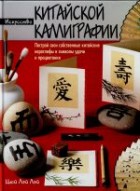
This magnificent book will introduce a charming world of calligraphy to You, it is aimed at assistance in mastering hilarious technique of Chinese writing and its different styles. You will learn about “four treasures” of Chinese calligraphy: paper, ink, ink-pen and brushes; learn how to chose and save them; moreover, You will study the basis of making up characters, with help of which You will be able to create Your own unique works for friends and relatives.
2006, 128 pages, ill.
The Art of Calligraphic Script, Nikolai Taranov
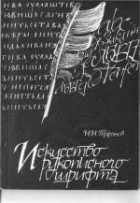
Nikolai Taranov - Doctor of Education, Candidate of art history, professor, member of Union of Russian artists.
He is the author of five education books on the fonts, among them the main are “Written font” (Lvov, 1986), “Art of the written script” (Moscow, 1989), “Script and image” (Moscow, 1991).
The book touches upon the peculiarities of various font types and broad-nib pen techniques, and gives the review of the main historic forms of Latin and Cyrillic fonts. The book provides the recommendations on instruments preparation and usage of materials, work of the round-nib pen and brush. The manual is well-illustrated. And also includes the works of the students of the Ukrainian Polygraphic Institute.
1991, 155 pages, illustrated
Nikolay Taranov is a participant of International Calligraphic Exhibition.
How to get talk writing, U.S. Petrosyan, A.E.Petrosyan
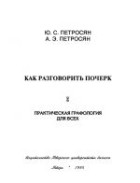
Work is devoted to regulations connected hand writing and personality. For the first time it gives a systematic description of categorical apparatus of graphology as an instrument of studying personality. This is a complex diagnostic system, allowing to create reliable graphology portraits.
Aimed for managers, teachers, politicians and social activists, researches and consultants, for those who is in the centre of events and communication with other people.
How to learn person’s character through his hand writing, O.K Nadjimov
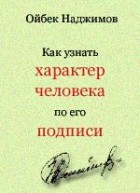
How to learn person’s character through his hand writing ? What testifies of weakness or will? Can it be changed to would-be someone? Does graphology always give 100% guarantee? Answers to all these questions reader will learn form the present book.
Calligraphy: Handwritten Scripts of West and East
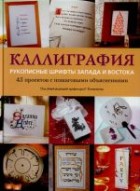
The book is written by a number of well-known professional calligraphers under general editorship of Professor R. Kleminson and contains detailed instructions which will teach the readers the elements of both Eastern and Western calligraphic writing. The book themes range from the history of handwriting to calligraphic instruments used in different countries of the world.
The book also touches upon the origins and development of every font and contains a glossary of the most widely-spread calligraphic terms. The suggested projects will help to master typography and will provide fine ideas for presents.
The book is meant for the experienced calligraphers looking for opportunities to broaden their skills and the beginners trying their hand in this ancient art which is becoming a true breakout all over the world instead of just being a hobby for a few.
2008, 226 pages, illustrated.
Calligraphy, Iliya Bоgdesko
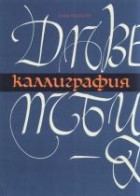
The world of calligraphy is boundless and gorgeous. However, enjoying and practicing calligraphy are two different matters.
Academician Iliya Bogdesko considers the rules of handwriting from the early years of the first millennium to invention of a book printing press.
The author puts an emphasis on mastering a very important skill of broad-nib pen writing. The book methodology, profoundly studied, is to create the basis for brushing up the calligraphic skills. “Be patient and persistent in your studies, and you will be successful”, says the author. A happy journey to the readers!
The book is meant for the amateurs of calligraphy as a “teach yourself” manual, and it will also be interesting for the students of art colleges, advertisement and book designers.
2006 . 170 pages, illustrated.
Iliya Bоgdesko is a participant of International Calligraphic Exhibition.
When there are no words left, the meaning is still preserved.



